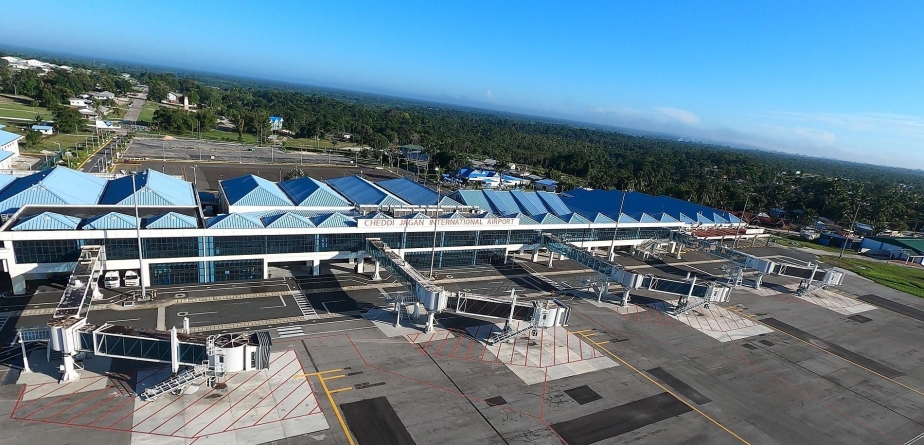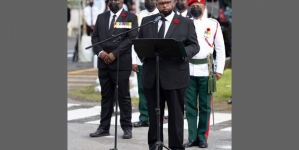CHEC submits deficient workplan for CJIA expansion
After 2 months
Months after it was requested, China Harbour and Engineering Company (CHEC) has finally submitted a revised work plan for the Cheddi Jagan International Airport (CJIA) expansion. But the revised workplan still does not meet the Public Works Ministry’s satisfaction.
This was revealed by Public Works Minister Juan Edghill in an interview with this publication. While the revised workplan was submitted by CHEC a few days ago, Edghill explained, it still lacks certain key components the Government wants included.
Among those components is the extension of the CJIA runway and an increase in capacity for eight standing aircraft.
Edghill questioned the efficacy of additional penalties against the contractor, which was previously slapped with penalties amounting to US$7000 for every day the project was delayed.
“We don’t have a submission as yet before us that shows us we will get 17,005 square metres of new building, with capacity for eight standing aircraft and eight air bridges, completion of an extended runway, and facilities that you can call a modern CJIA. We have not seen that as yet, and that’s what we’re working towards,” Edghill explained.
“I don’t know that even penalties will (be effective), because the contract was so mismanaged by the David Granger administration that even if I want to charge liquidated damages the way it should be charged, I don’t have the money in the contract to get the refund. The monies have already been expended and the works are not done, and that’s part of the problem with this contract.”
Moreover, the Minister explained that the work plan CHEC submitted indicates that work will be extended into 2021.
“The submission does not satisfy what we were expecting. And it does not indicate that we will have a functional airport by December 31. Everything is over to 2021, June 2021, and those are matters that are under consideration,” the Minister further explained.
President Dr Irfaan Ali had toured the CJIA expansion worksite back in September, when he read the Riot Act to the contractor, consultants and other officials. Among his concerns had been the deviation from the terms agreed upon in what was a fixed-price, US$138 million contract.
CHEC was therefore tasked with submitting a revised workplan that included the original design, such as facilities for eight air bridges, an extended runway, taxiways, and aprons with capacity for eight standing aircraft.
Additionally, it was expected that CHEC would make provision for the reconstruction, not renovation, of the terminal building. It was also expected that the company would have submitted this work plan within five days of August 28.
The project was supposed to have been completed since December 31, 2018 under the former A Partnership for National Unity/Alliance For Change (APNU/AFC) Government, but has now been taken over by the PPP/C Government in an incomplete and downgraded state.
In fact, the Granger-led APNU/AFC Administration had settled for a denigrated design while paying more than the allocated $150 million.
It was highlighted that the current coronavirus pandemic would not be used as an excuse, since the GCAA would facilitate a flight to have the China Harbour employees return to complete the works they had left pending.
For now, once the materials and human resources are present, the construction can resume. The contracting firm has already been appraised via letters of the corrective or remedial works that need to be done.
When the coalition Government came into power in 2015, the project was put on hold, but after discussions between former Public Infrastructure Minister David Patterson and CHEC, it was later announced that the project would be continued but a number of downgrades were done to the design.
Some $138 million of the allocated costs was funded by the EXIM (Export-Import) Bank of China, while $12 million was spent by the Guyana Government. It was not expected to surpass that sum, but Guyana had to stand additional expenses.
The CJIA, in its downgraded design expansion, has four less air passenger boarding bridges for arrivals and departures than the initial eight; a 450-seat departure area; escalators and elevators; in addition to an incomplete extended runway, which was supposed to measure 400 and 690 metres at the respective ends.
An old terminal building that was marked for cargo was revamped, and only one of the new sections was built.
Meanwhile, a new apron that was supposed to support the additional four air bridges is non-existent. There is also no space for enough duty-free shops, restaurants, car rentals and other facilities.






















